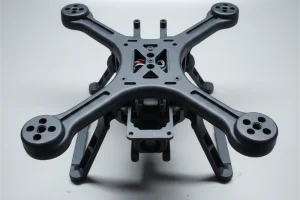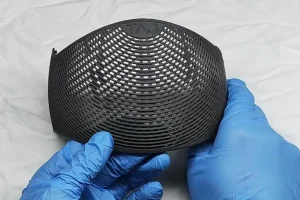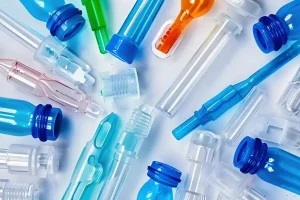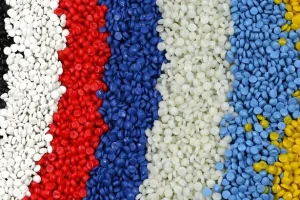Choosing the method you use to make your project is a big deal in manufacturing. Whether you’re developing a new product or improving an existing one, you have to choose a production strategy. The decision you make affects the cost, quality, and other factors. When it comes to the many different manufacturing technologies out there, plastic injection molding is the clear winner. Few processes in manufacturing have as many fans and supporters as plastic injection molding. In the last century, it was created and then gaining popularity has become the most important part of today manufacturing. The ubiquitous nature of artificial intelligence (AI) in different fields including automotive and consumer goods reflects its flexibility, productivity, and the advantage it brings to the products it keeps emerging in the market.

In this article we will enumerate all the benefits of plastic injection molding and will explain why it is by far the most famous today, especially for large scale production and for the manufacturing of complexly detailed parts.
Understanding Injection Molding
Plastic injection molding is the process of injecting molten plastic material into a pressurized mold cavity where it cools and takes the shape of the mold. This process allows for the production of complex, high-volume parts with consistent and repeatable results. Plastic injection molding is used in a wide range of industries, including consumer goods, automotive, medical, and electronics. If you need parts for your project, plastic injection molding is a great option.

Advantages of Plastic Injection Molding
High Efficiency and Productivity
One of the biggest benefits of plastic molding is its efficiency. The process allows for the quick production of large quantities of parts. Once the mold prototype is designed and the injection equipment is set up, the cycle time is very short, with each specific mold type taking only a few seconds. This high productivity is incredibly important because it makes mass production more affordable, as it takes less time and resources than any other production method.

Superior Quality and Consistency
Injection molding is a molding technology that has helped to produce high-quality and precise parts. Molds are subjected to extremely high forces that act on every part of the machine, causing material to be forced into every cavity of the mold. This results in the near-identical reproduction of complex shapes and patterns, even with their inconsistencies. The level of consistency is especially important in markets where compliance and quality are never in question (such as medical and aerospace).
To this end, processing parameters such as temperature, pressure, and injection speed can be tightly controlled, allowing for the creation of the tightest tolerances and consistent part dimensions. Additionally, only accurate (definitely specified) molds for high-quality manufacturing processes are used to ensure consistency across production runs. This means fewer product failures, better customer service, and happy customers with their purchases.

Material and Color Flexibility
Plastic injection molding is great because it can make complex parts with lots of shapes. It can also use lots of different materials and colors. There are a lot of different plastics to choose from, and each one has different good things about it. If you need something strong, or something that can handle chemicals, or something that can handle heat, or something that looks good, there is a plastic that can do that. You can start with cheap plastics like polyethylene and polypropylene, and go all the way up to fancy plastics like ABS, PC, and nylon. Injection molding lets you pick the right plastic for your part. You can also pick the right plastic to make your part work the best in its environment. You can pick the plastic that is the strongest, or the most flexible, or the most durable. You can also put color in the plastic. This lets you make parts in different colors to match your brand or your design.

Waste Reduction and Environmental Sustainability
These days, everyone is talking about sustainability. People want to know if the things they buy are eco-friendly, and companies want to know if the things they make are eco-friendly. Plastic injection molding is a great way to make things, but it also creates a lot of problems. People are starting to ask questions about plastic and how it affects the environment. They also want to know if there is a way to use less plastic, recycle more plastic, and use the same plastic over and over again. By doing things like recycling plastic, using closed-loop systems, and using less energy, companies can make things with plastic and still be good to the environment.

Cost Savings
First, plastic injection molding is known for being cost-effective, especially for mass production. One of the biggest advantages of mold making is low unit costs. As production volumes increase, unit costs decrease significantly. This is because the mold and setup costs are spread out over a larger number of parts, resulting in a lower unit production cost. Additionally, the injection molding process is highly efficient and can complete production cycles much faster than traditional manufacturing processes, which ultimately reduces manufacturing costs. Another great thing about automated injection molding machines is that they also reduce labor costs to some extent and improve overall productivity.

Design Flexibility and Complexity
The plastic injection molding process offers incredible design flexibility, allowing for complex shapes and designs that may be difficult or impossible to achieve with other manufacturing methods. Mold designs incorporating advanced technologies and high-pressure injection processes will be used to achieve features such as undercuts, threads, and thin walls. This concept sets the stage for the amazing potential for creativity and customization in product development.
Unlike other manufacturing methods that impose design limitations, injection molding can easily produce intricate, complex shapes, and undercuts. This freedom allows engineers and designers to optimize parts for functionality, performance, and aesthetics. The ability of plastic injection molding to incorporate finely detailed features and intricate ergonomic curves only expands the possibilities for new design in your product development.

Scalability and Production Efficiency
A good project at the beginning can become a big project as it grows, so scalability is important. Plastic injection molding is one of the most scalable and efficient manufacturing processes. With automation, optimized molds, and high-speed injection machines, you can make large volumes of parts, even if they are low quality and not very efficient. You can make anywhere from a few parts to tens of thousands, depending on how many you want to make. Injection molding can handle your production needs.
Rapid Prototyping
In today’s competitive market, it is necessary to prototype quickly to get your product to market fast. Another advantage of plastic injection molding is the ability to iterate and redesign quickly. As we all know, plastic injection molds run 9000 cycles per day. With generic materials and tooling, you can produce prototypes quickly for testing and input validation. This eliminates the need for multiple trial and error attempts, allowing you to identify design flaws early in the development process, saving you time and money in the long run.

Applications of Injection Molding
Automotive Industry
Plastic injection molding is mostly used in the automotive industry to make parts that are precise and labor-intensive. Parts like dashboards, bumpers, cup holders, and many under-the-hood items are the most commonly injection molded plastics. The injection molding process can use different materials like plastics that are resistant to light or chemicals which makes it useful in many automotive applications.

Medical Devices
The healthcare industry is one of the largest industries to benefit from injection molding, providing the industry with low-cost production, high-quality products, and intricate parts. These include surgical instruments, diagnostic devices, packaging containers, and machine components. The precision of this technology and the use of medical-grade materials are the checkboxes for producing high-quality and reliable medical products.

Consumer Electronics
Molding injections is the most common way to make parts for your gadgets like your phone, tablet, TV, and remote control. It can make strong, good-looking shells, buttons, and other parts that are the right shape and size, no matter how detailed.

Packaging
The packaging products industry is the broadest of them all and works with injection molding to make containers, lids, closures, and many other parts of the packaging. The technique that can produce huge numbers of repeatedly precise products, thus becomes a good alternative for industrial packaging if product uniformity and durability desired.

Toys and Leisure Products
In the toy and recreation industry, some of the products that are made using injection molding are action figures, water sport equipment like kayaks, and others. Being involved in the process can not only produce the end products in large quantities with complexity and multi-colored patterns, but also ensure the intricate details and durability that consumers expect.

Aerospace and Defense
Injection molding is a technique used to make parts for the aerospace and defense industries. It’s good for making lightweight parts that are also high quality. You can use it to make things like crew compartments, electronic system enclosures, and other important parts that have to follow strict rules.

Construction and Building
In the construction industry, injection molding is a widely used technique for making things like fittings, fasteners, and plastic tubing. The process can create parts and components that can withstand tough conditions and meet safety standards.

Case Study: Why Choose Injection Molding for Automotive Floor Mats?
Cars are a big deal to a lot of adults. Some people like fancy cars, and some people like cheap cars. As cars get more expensive, people want to take better care of them. There are a lot of car parts you can buy, and TPE floor mats are one of the most popular. But not all TPE floor mats are the same.
There are two main kinds of TPE floor mats. They are made in two different ways: injection molding and thermoforming.
In automotive markets, thermoformed TPE floor mats are more common, while automotive OEMs tend to prefer injection molding.
Even though injection molding is a lot more expensive than thermoforming — the cheapest mold for thermoforming costs $1,500 to $3,000, and the cheapest mold for injection molding costs $40,000 — some companies still use injection molding.

Main Differences Between Injection Molding and Thermoforming in Automotive Floor Mat Production
1. Material Differences: By using a 100% TPE injection molding process, we increase the purity of our products. Other processes, like thermoforming, often use materials like TPO or TPV, which have a similar rheology to TPE but don’t have the same purity as injection molding. So, when we make mats out of rubber compound and inject them, they have a soft, rubbery feel that feels good on your feet. When you look at thermoforming products, they’re usually hard like plastic, and they can make your feet tired on long drives.
2. Durability Differences: Injection-molded TPE floor mats have great recovery, meaning they can usually be returned to their original shape by pouring hot water on them or putting them in the sun every once in a while. Thermoformed TPE floor mats, especially after a long time, usually get curled edges that can’t be fixed.

The reason these products are different is because of how they are made. TPE is made by melting the pellets at high temperatures and then injecting them into a mold to make the final shape of the TPE. Thermoforming is a process where you make a thin sheet and then heat it up until it is soft and then put it into a cooled mold to make the final shape. This is why the product is not as bouncy as it used to be.
3. Differences in Molded Designs: Injection molds are a two-sided complex mold design, which creates a better texture that can be more sophisticated and detailed, thus extending the possibilities for designers’ imagination.
The disadvantage of the thermoforming process in the mold is limited by the production process, which can create the line-style products. However these are rid of the invention and customization.

4. Differences in Buckle Design: The double-strap closure that comes from injection molding can make the quality more solid and durable, and FA has applied for a patent for the double-strap buckle stitching technology. On the back of the buckle hinge pad, we added some anti-deformation ribs to reinforce the buckle at the hinge point and reduce the possibility of the buckle breaking.
Compared to the thinness of the thermoforming process, the double layer buckle design would be a huge undertaking to do for the quality of the material and if it would last. And that’s why almost all of the commodity thermoformed floor mats on the market still don’t use the double layer design.

Conclusion
It is a fact that plastic injection molding has a lot of benefits in terms of economy and performance. It is efficient and environmentally friendly. It eliminates unnecessary waste of material and color variations. It saves on design and cost. It is a must-have for all manufacturing industries. Plastic injection molding technology is the basis of innovative processes and superior performance in the manufacturing industry, no matter how complex consumer goods are.

In conclusion, we can say that injection molding is good for your projects in many ways. It is cost-effective and allows for custom designs. It is also good for fast prototyping and production efficiency. Whether you are a startup introducing new products to the market or an established operation looking to improve your manufacturing processes, injection molding can give you the flexibility and scalability you need to succeed in today’s competitive market. You can learn about the present and future of injection molding in these two ways and find success and new business opportunities in this exciting field.










